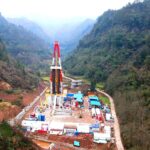US Startup Niron Ramps Rare Earths-Free Permanent Magnet Production with Pilot Plant
Introduction
Niron, a US-based startup, has made significant progress in the field of magnet production by developing a rare earths-free permanent magnet production technology. The company has successfully set up a pilot plant to manufacture these magnets, which have the potential to replace traditional rare earth-based magnets used in various industrial applications.
The Challenge with Rare Earths
Rare earths, such as neodymium and dysprosium, are used in the production of permanent magnets, which are essential components in many industries, including electric vehicles, wind turbines, and consumer electronics. However, the mining and refining of rare earths can have a significant environmental impact, including pollution and habitat destruction. Moreover, rare earths are also subject to price volatility, which can make it difficult for companies to plan and budget for their supply chain.
Niron’s Breakthrough
Niron’s new technology uses a different approach to produce permanent magnets that do not rely on rare earths. The company’s process involves sintering a mixture of iron and carbon to create a strong, durable magnet. This approach has several advantages over traditional methods, including reduced environmental impact and increased supply chain stability.
The Pilot Plant
To commercialize its technology, Niron has set up a pilot plant in the United States. The plant is equipped with high-tech equipment and machinery that allows for large-scale production of the company’s rare earths-free permanent magnets. The pilot plant is designed to produce a range of magnet products, from small to large, with varying levels of strength and magnetic field.
Applications
The rare earths-free permanent magnets produced by Niron have a wide range of potential applications across various industries. These magnets can be used in:
- Electric vehicles, such as motors, generators, and brakes
- Wind turbines, such as generators and bearings
- Consumer electronics, such as speakers, headphones, and microphones
- Industrial applications, such as clasps, grippers, and lifting devices
Benefits
Niron’s rare earths-free permanent magnets offer several benefits, including:
- Reduced environmental impact due to lower dependency on rare earth mining and refining
- Increased supply chain stability due to reduced dependence on rare earths
- Improved cost-effectiveness due to lower material costs and reduced production complexity
- Enhanced performance features, including higher coercivity and maximum energy product
Conclusion
Niron’s rare earths-free permanent magnet production technology has the potential to revolutionize the industry by providing a more sustainable, cost-effective, and high-performance solution. With its pilot plant now operational, Niron is poised to play a significant role in shaping the future of magnet production.
FAQs
- What is Niron’s rare earths-free permanent magnet technology?
Niron’s technology uses a sintering process to create a strong, durable magnet from a mixture of iron and carbon, eliminating the need for rare earths. - What are the benefits of Niron’s technology?
The benefits include reduced environmental impact, increased supply chain stability, improved cost-effectiveness, and enhanced performance features. - What kinds of products can be made with Niron’s rare earths-free permanent magnets?
The magnets can be used in a wide range of applications, including electric vehicles, wind turbines, consumer electronics, and industrial equipment. - How does Niron’s technology compare to traditional rare earth-based magnet production?
Niron’s technology offers several advantages, including reduced environmental impact, increased supply chain stability, and improved cost-effectiveness, making it a more sustainable and viable option for magnet production.




_2.png?w=150&resize=150,150&ssl=1)
_1.png?w=150&resize=150,150&ssl=1)

_1.png?w=150&resize=150,150&ssl=1)